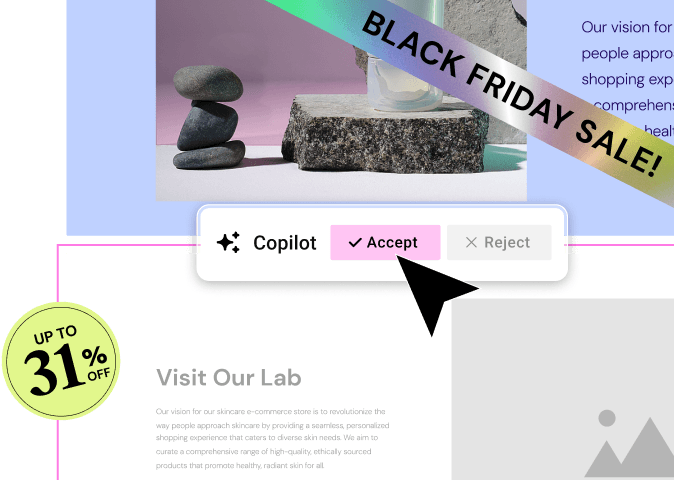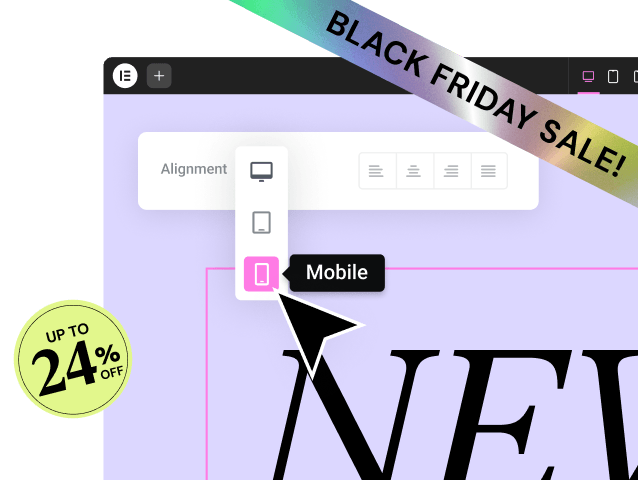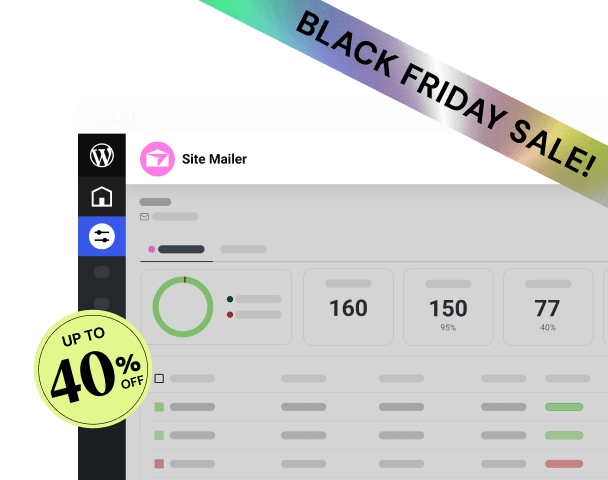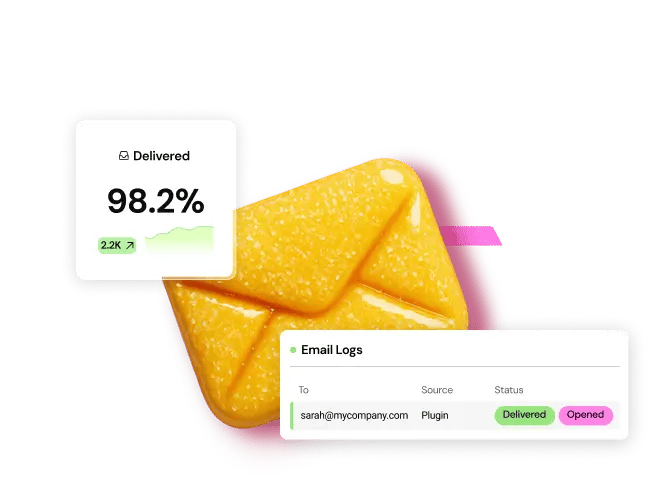Table of Contents
This guide will break down every factor that influences website cost in 2025. We will explore the different paths you can take, from a complete do-it-yourself (DIY) approach to hiring a full-service agency. We will provide a detailed look at the specific expenses you can expect, both upfront and ongoing. By the end, you will have a clear, realistic understanding of the investment required to bring your digital vision to life.
Key Takeaways
- Website costs range dramatically: A DIY website can cost as little as $60 – $300 per year. Hiring a freelance designer typically ranges from $1,000 – $10,000, while a full web design agency project can cost anywhere from $10,000 to $50,000+.
- The primary cost drivers are complexity and labor: The more features, custom functionality, and unique design elements a site requires, the more it will cost. The biggest variable is who builds the site. A DIY approach saves on labor costs but requires your time.
- Ongoing costs are crucial: Your budget must account for recurring annual expenses for your domain name, web hosting, premium plugins, and security. These typically range from $100 to $1,000+ per year.
- Platform choice matters: Building on a flexible and scalable platform like WordPress gives you control over your costs and future growth. Using an integrated ecosystem like Elementor, which combines a builder, hosting, and performance tools, can streamline your workflow and reduce long-term expenses.
- Hidden costs exist: Budget for content creation, professional photography, SEO services, and marketing. These are not part of the technical build but are essential for the website’s success.
The Core Factors Influencing Website Cost
Before we break down the specific line-item expenses, it is important to understand the high-level factors that determine your project’s budget. Every decision you make in these areas will have a direct impact on the final price tag.
1. The Building Method: DIY, Freelancer, or Agency?
This is the single most significant decision you will make. It defines the balance between your monetary investment and your time commitment.
- Do-It-Yourself (DIY): This is the most budget-friendly option. Using modern tools like a website builder, you can create a professional-looking website with no coding knowledge. This path is ideal for individuals, small businesses, and anyone with a tight budget who is comfortable with technology and willing to learn. The primary costs are for software, hosting, and a domain name.
- Hiring a Freelancer: This is the middle-ground approach. You hire an independent web designer or developer to build the site for you. This is a great option if you want a custom design but do not have the budget for a full agency. Costs are typically based on an hourly rate or a fixed project fee.
- Hiring a Web Design Agency: This is the premium, full-service option. An agency provides a team of experts, including project managers, strategists, designers, developers, and marketers. They handle every aspect of the project, from initial strategy to launch and beyond. This is the best choice for established businesses, large-scale projects, and anyone needing a complex, highly customized website.
2. Website Complexity and Size
The number of pages and the complexity of the site’s structure directly influence cost.
- Simple Website (1-10 pages): This includes basic brochure-style sites for small businesses, portfolios for creatives, or personal blogs. They typically have a homepage, an about page, a services page, a gallery, and a contact page.
- Medium-Sized Website (10-50 pages): This could be a larger corporate site with multiple service sections, case studies, a resource center, and an integrated blog with many posts.
- Large & Complex Website (50+ pages): This category includes large ecommerce stores with thousands of products, membership sites with protected content, online learning platforms, or enterprise-level websites with multiple integrations.
3. Design and User Experience (UX)
The visual and interactive elements of your site play a huge role in its cost.
- Template-Based Design: Using a pre-built template or theme is the most affordable option. You choose a design you like and customize it with your own colors, fonts, and content. The Elementor Library, for example, offers hundreds of professionally designed templates and full website kits.
- Customized Template: A designer can take a premium template and modify it significantly to better match your brand, creating a semi-custom look for a fraction of the cost of a fully custom design.
- Fully Custom Design: This involves a designer creating a unique, one-of-a-kind website design from scratch, tailored specifically to your brand and business goals. This is the most expensive option but provides the most distinct and brand-aligned result.
4. Functionality and Features
What do you need your website to do? Every piece of functionality adds a layer of complexity and, therefore, cost.
- Basic Features: Standard contact forms, image galleries, and embedded maps are typically included in core website builders.
- Advanced Features: This can include ecommerce functionality (shopping carts, payment processing), event calendars, booking systems, membership portals, customer login areas, or advanced forms.
- Custom Integrations: Do you need your website to connect with a third-party CRM, an inventory management system, or a proprietary software? These API integrations require specialized development and can significantly increase the cost.
Website Cost Breakdown: A Detailed Look at Expenses
Now, let’s get into the specific costs you can expect to pay. We will separate them into upfront, one-time costs and ongoing, recurring costs.
Upfront Costs (First Year)
These are the initial expenses required to get your website designed, built, and launched.
1. Domain Name
A domain name is your website’s address on the internet (e.g., yourbusiness.com). This is a mandatory purchase.
- Cost: $10 – $20 per year for a standard .com, .org, or .net domain.
- Note: Some hosting companies offer a free domain name for the first year when you purchase a hosting plan.
2. Web Hosting
Web hosting is the service that stores your website’s files and makes them accessible to visitors online. This is another mandatory expense.
- Shared Hosting: The most affordable option, where you share server resources with other websites. Ideal for new or small sites.
- Cost: $3 – $15 per month
- Managed WordPress Hosting: A specialized type of hosting optimized for WordPress websites. It often includes enhanced security, faster performance, and expert support. This is highly recommended for any serious business website.
- Cost: $20 – $100 per month
- Integrated Platform Hosting: Some platforms offer an all-in-one solution that bundles the builder software with managed hosting. Elementor Hosting is a prime example, providing a high-performance, secure environment specifically engineered for Elementor websites. This can be cost-effective as it often includes premium software like Elementor Pro.
- Cost: $15 – $50 per month, depending on the plan.
3. Website Software (Builder & CMS)
This is the platform you use to build and manage your website content.
- WordPress.org: A free, open-source Content Management System (CMS) that powers over 43% of the web. The software itself is free, but you will need hosting and a domain.
- Cost: Free
- Page Builder Plugin: This is the tool that allows you to design your website visually.
- Elementor (Free Version): A powerful tool that offers enough features to build a complete, professional website. You can get started with this at no cost. You can download the free version here.
- Cost: Free
- Elementor Pro (Premium Version): Unlocks advanced features like the Theme Builder, Form Builder, WooCommerce Builder, popups, and more professional widgets. This is a worthwhile investment for any business.
- Cost: $59 – $399 per year, depending on the number of websites.
4. Theme/Design
This is the visual framework of your site.
- Free Theme: There are thousands of free themes available for WordPress. The Hello Theme from Elementor is a popular choice as it’s a lightweight, minimalist “blank canvas” designed for full creative control with Elementor.
- Cost: Free
- Premium Theme: These offer more features, better design quality, and dedicated support.
- Cost: $40 – $100 (one-time fee)
5. Plugins (Functionality)
Plugins are apps you install on your WordPress site to add features.
- Basic Plugins (Free): Many essential functions like basic SEO, security, and contact forms can be handled by free plugins.
- Premium Plugins: For advanced functionality, you will likely need premium plugins.
- Ecommerce (WooCommerce): Free, but extensions for shipping, payments, etc., can cost $50 – $200+ each.
- Image Optimization: Tools like Image Optimizer by Elementor help speed up your site and have both free and premium tiers.
- Accessibility: Ensuring your site is usable by everyone is critical. Plugins like Ally by Elementor provide tools to scan and remediate accessibility issues.
- Transactional Email: Standard WordPress email is unreliable. A service like Site Mailer by Elementor ensures your form submissions and notifications get delivered.
- Cost: Budget $100 – $500 per year for a handful of essential premium plugins.
Ongoing Maintenance Costs (Annual)
A website is not a one-time purchase. It requires ongoing investment to keep it secure, functional, and effective.
- Domain Name Renewal: $10 – $20 per year
- Web Hosting Renewal: $100 – $600 per year (renewal prices are often higher than introductory rates)
- Premium Plugin/Theme Licenses: $100 – $500+ per year
- SSL Certificate: This encrypts data on your site and is essential for security. Most hosting providers now include a free SSL certificate. If not, expect to pay $50 – $150 per year.
- Professional Maintenance: If you don’t want to handle updates and security yourself, you can hire a professional.
- Cost: $50 – $200 per month
As web development expert Itamar Haim notes, “Many first-time website owners focus solely on the initial build cost. They often overlook the Total Cost of Ownership (TCO), which includes ongoing maintenance, security, and marketing. A platform approach, where hosting, design tools, and performance features are integrated, can significantly lower this TCO over the long run.”
DIY Website Costs: The Budget-Friendly Approach
Building your own website is more accessible than ever. For those willing to invest some time, the financial outlay can be surprisingly low. Let’s break down the costs for a few common DIY scenarios using the powerful combination of WordPress and Elementor.
The Essential DIY Toolkit & Costs
Here is what a typical first-year budget looks like for a DIY project:
| Item | Low-End Cost (per year) | High-End Cost (per year) | Notes |
| Domain Name | $15 | $20 | A standard .com is best for business. |
| Web Hosting | $60 | $180 | Choose a quality managed WordPress host. |
| Theme | $0 | $60 | Start with a free theme like Hello. |
| Page Builder | $0 | $59 | The free Elementor is powerful. Elementor Pro adds professional tools. |
| Premium Plugins | $0 | $150 | For added functionality like advanced forms or SEO. |
| Total First-Year Cost | ~$75 | ~$469 |
Example Scenarios & Budgets
Scenario 1: The Personal Blog or Portfolio Website
A simple site to showcase your work or share your thoughts.
- Goal: A visually appealing, mobile-friendly site with an image gallery, blog, and contact form.
- Tools:
- Domain: $15/year
- Hosting: Basic Managed WordPress Hosting (~$10/month) = $120/year
- Theme: Hello Theme (Free)
- Builder: Elementor Free Version (Free)
- Total Estimated Annual Cost: ~$135 per year
Scenario 2: The Small Business “Brochure” Website
A professional online presence for a local service business (e.g., plumber, consultant, restaurant).
- Goal: A site that builds credibility, explains services, showcases testimonials, and generates leads through a robust contact form.
- Tools:
- Domain: $15/year
- Hosting: Elementor Hosting Basic Plan (includes Elementor Pro) = ~$180/year
- Builder: Elementor Pro (included with hosting)
- Additional Plugins: Maybe a premium SEO or security plugin = $50/year
- Total Estimated Annual Cost: ~$245 per year (Excellent value due to the bundled Pro plugin with hosting).
Scenario 3: The Startup eCommerce Store
An online store to sell a small collection of physical or digital products.
- Goal: A fully functional online shop with product pages, a shopping cart, and secure payment processing.
- Tools:
- Domain: $15/year
- Hosting: Ecommerce Hosting with more resources (~$30/month) = $360/year
- Builder: Elementor Pro (essential for its WooCommerce Builder) = $59/year
- Ecommerce Plugin: WooCommerce (Free)
- Payment Gateway Fees: ~2.9% + $0.30 per transaction (Stripe/PayPal)
- Premium Extensions (e.g., advanced shipping): $100/year
- Total Estimated Annual Cost: ~$534 per year + transaction fees.
Hiring a Freelancer or Agency: The Professional Options
When you need a custom solution or lack the time and expertise to build the site yourself, hiring a professional is the right move. Costs here are primarily driven by labor.
Hiring a Freelancer
Freelancers offer a personalized service and are often more affordable than agencies. Rates vary widely based on experience and location.
- Hourly Rates:
- Beginner/Entry-Level: $25 – $50 per hour
- Intermediate: $50 – $100 per hour
- Expert/Senior: $100 – $250+ per hour
- Project-Based Pricing:
- Simple Brochure Website: $1,000 – $4,000
- Small Business Website with CMS: $3,000 – $8,000
- Basic eCommerce Website: $5,000 – $15,000
Hiring a Web Design Agency
Agencies bring a team of specialists and a more strategic, process-driven approach to your project. This is the best option for established businesses that view their website as a critical marketing and sales asset.
- Project-Based Pricing:
- Small Business Website: $8,000 – $20,000
- Corporate Website: $20,000 – $40,000
- Custom eCommerce Website: $25,000 – $75,000+
- Large-Scale Custom Web Application: $75,000 – $250,000+
| Comparison | DIY | Freelancer | Agency |
| Upfront Cost | $75 – $500 | $1,000 – $15,000 | $8,000 – $75,000+ |
| Time Investment | High | Low | Very Low |
| Customization | Medium | High | Very High |
| Best For | Individuals, startups, tight budgets | Small to medium businesses | Established businesses, complex projects |
Unseen Costs: What Most People Forget to Budget For
A successful website is more than just code and design. Several other critical components require a budget.
- Content Creation: You need high-quality text, or copy, for every page. If you’re not a strong writer, you may need to hire a copywriter ($50 – $150 per hour). A well-written website is essential for communicating your value and for SEO.
- Photography and Videography: Stock photos can work, but professional, custom photography of your team, location, and products makes a huge difference in building trust. A professional photoshoot can cost $500 – $5,000.
- Search Engine Optimization (SEO): Building a website is just the first step. Getting it to rank on Google requires ongoing SEO efforts. A one-time SEO setup might cost $750 – $3,000, while a monthly retainer for ongoing SEO services can be $500 – $5,000+ per month.
- Digital Marketing & Advertising: Driving traffic to your new site requires a marketing strategy. This could include social media marketing, content marketing, or paid advertising (PPC), which can have variable monthly costs. A service like Send by Elementor can help with email marketing, a core component of this strategy.
- Accessibility (A11Y): Ensuring your website is accessible to people with disabilities is not just good practice, it’s a legal requirement in many places. While tools like Ally by Elementor can help automate checks, a full accessibility audit by an expert can cost $1,000 – $5,000.
How to Save Money on Your Website (Without Cutting Corners)
A limited budget does not mean you have to settle for a poor-quality website. Here are some smart ways to manage costs.
- Start with a Clear Plan: Before you build or hire, know exactly what you need. Create a sitemap and a list of required features. Tools like the Elementor AI Site Planner can help you generate a professional website brief and wireframe for free, saving hours of planning time.
- Embrace the DIY Approach (If You Can): Using a platform like WordPress with Elementor is the single biggest way to save money. The learning curve is manageable, and the results can be just as professional as a site built by a pro.
- Use a High-Quality Template: Start with a professionally designed website kit instead of building from scratch. This gives you a solid foundation that you can customize, saving dozens of hours in design time.
- Launch a Minimum Viable Product (MVP): You do not need every feature on day one. Launch your website with the essential core features, and then add more advanced functionality later as your business grows and generates revenue.
- Choose an Integrated Platform: Opting for a solution like Elementor Hosting that bundles premium software with hosting can offer significant savings compared to buying each component separately. This also simplifies management and support.
Frequently Asked Questions (FAQ)
1. Can I build a website completely for free? Yes, it is technically possible. You could use a free subdomain from a platform like WordPress.com and use their free plan. However, this comes with major limitations: you cannot use your own custom domain (e.g., yourbusiness.wordpress.com), you’ll have their ads on your site, and you have very limited customization options. For any professional or business use, you should invest in your own domain and hosting, which has a minimal cost.
2. How much does a simple 5-page website cost?
- DIY: Around $100 – $250 for the first year, covering your domain, hosting, and potentially a premium builder like Elementor Pro.
- Freelancer: Typically between $1,500 and $4,000.
- Agency: Likely in the $8,000 to $15,000 range.
3. Is WordPress the most affordable option? WordPress.org (the self-hosted version) is one of the most cost-effective platforms in the long run because the core software is free and you have complete control over every aspect of your spending. You can choose affordable hosting and use free themes and plugins to start, only paying for premium features as you grow. This is more flexible than all-in-one SaaS builders that have fixed monthly fees that increase as you need more features.
4. How much should I budget for website maintenance annually? A safe rule of thumb is to budget 10-15% of your initial build cost for annual maintenance. For a DIY site, this will mostly be your renewal costs for hosting and plugins ($100 – $500). For a site built by an agency for $15,000, you should budget at least $1,500 per year for hosting, licenses, and professional support.
5. Do I need to know how to code to build a website? Absolutely not. In 2025, tools like the Elementor Website Builder allow you to design and build sophisticated websites using a visual drag-and-drop interface. For more advanced customization, you can even use Elementor’s AI to generate custom CSS or HTML code snippets without writing them yourself.
6. Is it cheaper to use a template or a custom design? Using a template is always significantly cheaper. A custom design requires many hours of a professional designer’s time to create wireframes, mockups, and the final design from scratch. A template provides a ready-made professional design that you can populate with your content, saving 80-90% of the design cost.
7. How much do ecommerce websites cost compared to regular websites? Ecommerce websites are inherently more complex and therefore more expensive. They require a shopping cart, product inventory management, secure payment gateway integration, and customer account functionality. Expect an ecommerce site to cost at least 50-100% more than a non-ecommerce site of similar size and design quality.
8. What’s the difference in cost between hiring a freelancer in the US vs. overseas? There can be a very large cost difference. Developers and designers in North America and Western Europe typically have the highest hourly rates ($75 – $150+). Freelancers from Eastern Europe, Asia, or South America may have much lower rates ($25 – $60). While this can be a way to save money, it can also introduce challenges with communication, time zones, and quality control. Always vet any freelancer’s portfolio and reviews carefully.
9. How can I get a reliable cost estimate for my project? The best way is to create a detailed project brief or Request for Proposal (RFP). This document should outline your business goals, target audience, desired features, sitemap, and provide examples of websites you like. The more detail you provide, the more accurate the quotes you will receive from freelancers and agencies.
10. Should I choose a monthly SaaS builder or WordPress? SaaS builders (like Wix or Squarespace) are great for beginners due to their simplicity, but they can be limiting and more expensive over time. WordPress offers unparalleled flexibility, scalability, and ownership. You are never locked into one company. For any business that anticipates growth, WordPress combined with a powerful builder like Elementor is the superior long-term investment.
Conclusion: Investing in Your Digital Foundation
As we have seen, the cost to build a website in 2025 is not one-size-fits-all. It is a flexible investment that can be tailored to fit almost any budget. The key is to understand that you are not just buying a piece of software. you are building a foundational asset for your business or personal brand.
For those just starting out, the DIY path, powered by accessible and powerful tools like WordPress and Elementor, has democratized web creation. It is entirely possible to launch a beautiful, functional, and professional website for a few hundred dollars a year. As your needs grow more complex, the options to hire skilled freelancers or strategic agency partners are there to help you scale.
Ultimately, the right budget is the one that aligns with your specific goals. By planning carefully, understanding the ongoing costs, and choosing a scalable platform, you can ensure that your website is not just an expense, but a powerful investment that delivers value for years to come.
Looking for fresh content?
By entering your email, you agree to receive Elementor emails, including marketing emails,
and agree to our Terms & Conditions and Privacy Policy.












